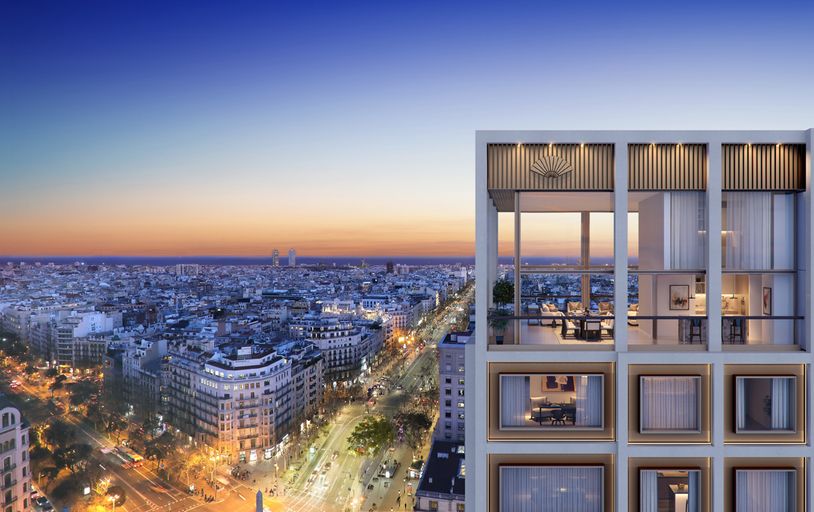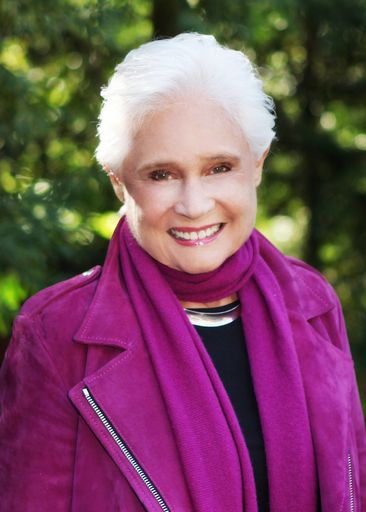
Living Architecture
Luxury and landscapes typically call to mind ornate fountains, elaborate parterre patterns and formal gardens, all considered estate classics. But, today, landscapes surrounding upscale homes and estates are apt to appear more relaxed, synced to the surrounding terrain and seemingly spontaneous. Compared to the classics, they are no less premeditated and well orchestrated, helmed by a growing cadre of design professionals devoted to everything outside.
Along with residential properties and estates, college campuses, urban parks, public gardens, green roofs, bioremediation, and conservation, all fall under the purview of landscape architects and designers.
On a residential level, the expertise a landscape designer or architect brings to the job is equally diverse, extending beyond greenery and flowers to include swimming pools, water features, pool houses, art studios, writing sheds, sculpture and outdoor art, stables, tennis and pickleball courts, gazebos, trails, walking paths and forested land. For example, one incentive for a large residential project in Ohio recognized by the American Society of Landscape Architects (ASLA) in 2023 was a sculpture collection. Here outdoor art gets as much attention as flora and fauna.

Courtesy of Design Workshop, Inc. / Brandon Huttenlocher
“My goal is always to try and bring the landscape and the home into a supporting role. So that the landscape looks like it has been there forever and flows with the home's architecture,” says Julianna Roosevelt, a landscape designer at Environ Architecture in Long Beach. “Even if it's a contemporary home, the landscape has to look as if it was designed exactly for that home. And it's always been there.”
Not Just Grass and Greenery
As much as landscape design seems like a plant business, it’s also a relationship business. Architects and designers juggle essential connections with residential architects, civil engineers, local governments, business managers and more.
Equally important is the connection with the land. Also honored by ASLA was a modernist interpretation of mountain living set on a promontory in Big Sky overlooking Montana’s Madison Range on land shaped by wind, fire, water and ice. The goal was to protect vistas, night skies and wildlife while connecting inhabitants to the story of the place.
Nothing shapes an outcome more than the owner. “Generally speaking, it's the relationship you build with the clients that enables you to really give them the landscape that they desire,” says Roosevelt.
Even with existing gardens, new owners want to put their own fingerprint on the scheme. The first step for a designer is to assess what’s currently in place. Sometimes existing material can be used.
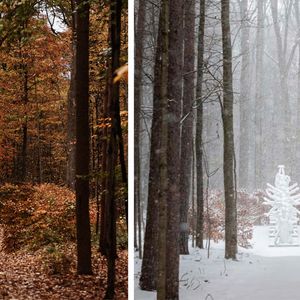
Courtesy of Reed Hilderbrand LLC/ Paul Sobota (left) and Eric Piasecki (right)
Getting Clients Oriented
The client relationship is often a process of educating and exposing them to how the outside influences their everyday life. “I spend a lot of time with them walking around the existing landscape,” shares Roosevelt, who also spends time indoors, looking out the windows. She says she wants to evaluate what they're going to see, including what the drive in looks like, what the approach to the front door looks like, et cetera. And she pays attention to what you would see of the landscape from each room of the house. “It’s important to get a sense of the owner’s style.”
If you look at top garden magazines in the U.S., Europe and South America, Roosevelt says they all mention the importance of the individual and understanding the personality of the garden. For the designer, she says, that relationship requires a serious knowledge of plant material since “each home has its own microclimate.”
As climates change and evolve, the ability to address new amounts of rainfall, sunshine and heat is expected to become more critical. Not only must a designer be well-versed in the native plants of a particular area, but knowledge of the history of gardens is equally essential. Like many landscape designers and architects, Roosevelt visits top gardens worldwide. “I have also grown up with some extraordinary gardens and women who were seriously active in garden societies,” she adds.
Requests for ornate fountains are not as frequent as a few years ago. Formal displays, such as these, are usually paired with a specific property type, such as a French Chateau. For designers and owners, it entails a search for period antiques, fountains, large cement pots and items of that nature.
Seasonal showcases, often numbering in the hundreds or thousands of blooms and bulbs, are still requested, as are singular demonstrations, such as a succession of spring blossoms or native species along paths and walkways leading into wooded areas.
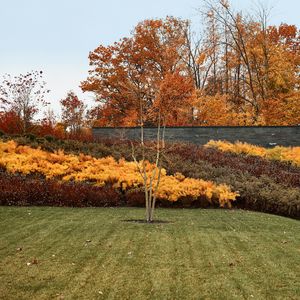
Collected Works - Restore Land - Northeast Ohio Residence
Special Requests
Owners today have diverse interests, which also shape expectations. They may have children and pets or want to create equestrian spaces. And it’s the landscape architect’s job to bring these interests to fruition while still respecting the land.
One change over the last decade is a growing interest in specialty gardens. Meditation spaces, serenity gardens, and white gardens are all on wish lists today, along with orchards, vegetable gardens and chickens. Even those who don’t cook still desire kitchen gardens just to showcase what has been grown on the property.
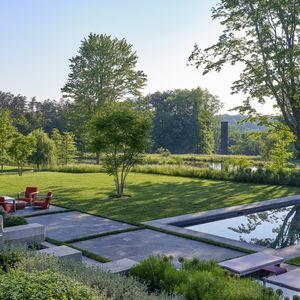
Courtesy of Reed Hilderbrand LLC/ Millicent Harvey
Also on the rise, according to Roosevelt, are requests for personal vineyards. “If you have a great sunny spot, maybe on a hill, that could be a great spot to do a personal vineyard,” she says.
By Camilla McLaughlin
This article originally appeared in Homes & Estates magazine.
SHARE

